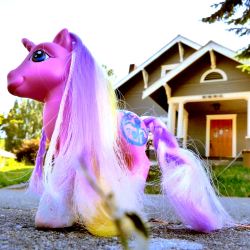Here’s a great article that printed in the Seattle P-I in February 2007 (you know, back when they still existed as a printed paper).
For those undeterred by the sales flier that warned a 96-year-old Columbia City house is “an extreme fixer, to be entered at your own risk” or by the “hazardous environment” sign on the door, Al Johnson left a flashlight just inside the entry.
“I’m on my second battery,” said Johnson, an associate broker with Windermere Real Estate, during an open house earlier this month. He posted this listing on a Sunday evening and got calls about the house every half-hour the following day.
“One, it’s about the cheapest thing around,” Johnson said. “And two, people just get drooly about projects. … People get weak in the knees and say, ‘Oh, I can do this. I love this.’ “
As Seattle houses get more and more expensive, homes in need of work have become more attractive to people who want to live in a city house with character or are looking for a fruitful investment.
…
The increased interest in fixers over the past few years drove up prices beyond where many projects pay off for those who want to fix a house, then sell it right away, according to agents and builders.“Everybody and their uncle was in this business,” said Mark Johnson, who started renovating houses and building new ones in 2001, after five years as a contractor.
…
But despite the slowing market, [Mark] Johnson sees an upside.“As far as flipping, it’s going to be a good thing, because there’s not as much competition,” he said. “Quite frankly, it’s time to buy.”
By this time sales volume had been dropping and inventory increasing in the Seattle area for about a year. The writing was on the wall—prices peaked just five months later. The following three to four years were a terrible time to flip homes.
I don’t even understand why this particular “investor” was still bullish on flipping at this point, considering his own recent experience:
Johnson, no relation to Al Johnson, recently paid $360,000 for an old West Seattle house and said he poured about the same amount into overhauling it before putting it on the market last year. When the offers that came in were lower than he wanted, he decided to move in himself.
He said he knew the market was slowing when he started the project, “but I was kind of a little cocky, I guess, and thought that I could beat it.”
I scoured some public records and found the home described here. Mark Johnson paid $358,000 for the home in February 2006, tried to list it for $799,000 in August 2006, but gave up a month later. He still owns the home, and nearby comps have been selling for an average of $383,000. Even worse, it looks like he continued to buy homes to flip in 2008 and 2009. Yikes.
Here’s what I had to say at the time this article was published:
I think maybe there is some kind of virus infecting the minds of potential homebuyers. The virus settles into the brain and causes the victim to lose the capacity for rational thought in matters of real estate.
Symptoms include the delusions that “I need to buy now or I’ll be priced out forever,” “I should use whatever kind of financing I can get my hands on,” and “owning any old dump is better than renting.”
…
Oh yeah. For sure now is a great time to buy an overpriced dump. When isn’t it a great time to buy one?
While anyone who decided that 2007 was a great time to start flipping homes probably ended up losing a lot of money, the eventual buyer of the “96-year-old Columbia City extreme fixer” did manage to pull off a decent little profit. They paid $315,000 in February 2007 and got out just in time, selling in November 2007 for $525,000. I hope for their sake that they were shrewd enough not to sink their profits into another attempt shortly afterward.
